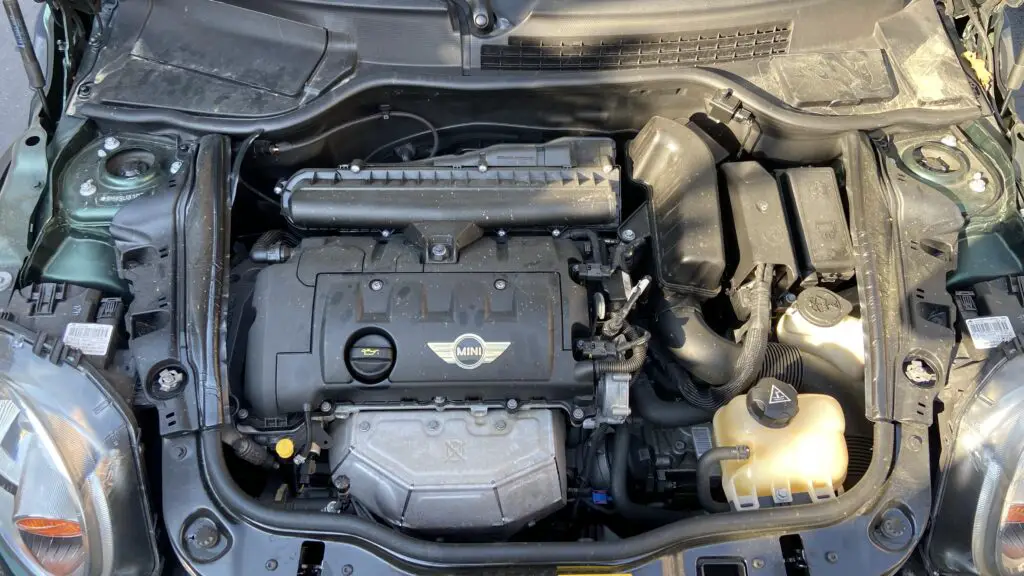Mini Cooper engine identification involves checking the engine number stamped on the block, decoding engine codes, and using the VIN for details. Visual inspection and manufacturer labels also help confirm the engine type.
The Mini Cooper is an iconic car known for its distinctive design and impressive performance. Over the years, the Mini Cooper has undergone numerous changes, especially in its engine configurations. For enthusiasts, mechanics, and potential buyers, identifying the correct engine model is essential for maintenance, upgrades, and authenticity verification.
This guide will provide a detailed exploration of how to identify Mini Cooper engines, covering various models and generations.
Contents
Mini Cooper Engine Identification
Knowing the progression of Mini Cooper engines helps enthusiasts appreciate the brand’s engineering advancements and choose the right model for their needs.
Classic Mini Cooper (1959-2000)
The original Mini, produced by the British Motor Corporation (BMC) and later by Rover, featured a series of A-series engines. These engines were compact and fuel-efficient, aligning with the Mini’s design philosophy.
- A-Series Engines (1959-1990): Ranged from 848cc to 1275cc.
- A+ Engines (1980-2000): Enhanced versions with improved reliability and efficiency.
- Identification: Engine numbers typically start with “99” or “12” followed by specific codes indicating displacement and specifications.
BMW Era Mini Cooper (2001-Present)
After BMW acquired the Mini brand, significant changes were introduced, especially in engine technology.
- R50/R53 (2001-2006):
- Base Cooper models featured the Tritec 1.6L SOHC engine.
- Cooper S models had a supercharged 1.6L engine.
- Engine Codes: W10B16A for base models and W11B16A for Cooper S.
- R56 (2007-2013):
- Introduced the Prince engine, co-developed with PSA Peugeot Citroën.
- Turbocharged versions replaced supercharged models.
- Engine Codes: N12B16A for naturally aspirated and N14B16A for turbocharged models.
- F56 (2014-Present):
- Modern Mini Coopers use BMW’s TwinPower Turbo engines.
- Engine Codes: B38A15M0 (1.5L 3-cylinder), B48A20M0 (2.0L 4-cylinder).
How to Identify a Mini Cooper Engine
Properly identifying your Mini Cooper engine is crucial for accurate maintenance, performance upgrades, and ensuring compatibility with replacement parts.
1. Locate the Engine Number
The engine number provides critical information about the engine type, capacity, and production details. Depending on the model and year, the engine number can be found in various locations:
- Classic Mini: Stamped on a flat area on the engine block near the alternator.
- R50/R53 Models: Found on the front side of the engine, below the intake manifold.
- R56 Models: Stamped on the engine block near the oil filter housing.
- F56 Models: Located on the engine block, usually near the timing chain cover.
2. Decode the Engine Number
The engine number often includes alphanumeric codes that indicate the engine series, displacement, and other specifications.
- Example (Classic Mini): “12H905AA”
- “12” indicates a 1275cc engine.
- “H” refers to the high compression variant.
- The remaining characters denote specific factory and production codes.
- Example (BMW Mini): “N14B16A”
- “N14” denotes the engine family.
- “B16” indicates a 1.6L displacement.
- “A” identifies the emission standard and configuration.
3. Use the Vehicle Identification Number (VIN)
The VIN provides a wealth of information about the vehicle, including the engine type.
- Position 8: Typically designates the engine code.
- Position 10: Indicates the model year.
- VIN Decoder Tools: Online tools can help decode the VIN for exact engine details.
4. Visual Inspection
Certain engines have distinct visual features:
- Supercharged Engines (R53): Presence of a supercharger unit.
- Turbocharged Engines (R56 onwards): Turbocharger and intercooler piping.
- 3-cylinder Engines (F56): Compact design with fewer ignition coils.
5. Manufacturer Labels and Stickers
BMW Mini models often have labels under the hood specifying the engine type, oil type, and other specifications. Checking these can provide quick identification.
Common Mini Cooper Engine Codes
Familiarizing yourself with Mini Cooper engine codes can simplify maintenance, repairs, and performance upgrades by ensuring the correct engine parts and specifications are used.
| Engine Code | Displacement | Fuel Type | Configuration | Models |
|---|---|---|---|---|
| 99H | 848cc | Petrol | Inline-4 (A-series) | Classic Mini |
| 12H | 1275cc | Petrol | Inline-4 (A-series) | Classic Mini Cooper |
| W10B16A | 1.6L | Petrol | SOHC Inline-4 | R50 (2001-2006) |
| W11B16A | 1.6L | Petrol | Supercharged Inline-4 | R53 Cooper S |
| N14B16A | 1.6L | Petrol | Turbocharged Inline-4 | R56 Cooper S |
| B38A15M0 | 1.5L | Petrol | Turbocharged Inline-3 | F56 Cooper |
| B48A20M0 | 2.0L | Petrol | Turbocharged Inline-4 | F56 Cooper S/JCW |
Frequently Asked Questions
Here are some FAQs about mini cooper engine identification –
1. How do I find the engine code on my Mini Cooper?
Locate the engine number stamped on the engine block or refer to the VIN for engine details.
2. What is the difference between the N14 and N18 engines?
The N18 engine, introduced in 2011, improved reliability over the N14 with enhanced timing chain systems and better fuel efficiency.
3. Are all Mini Cooper engines made by BMW?
Not all. Early models (2001-2006) used Tritec engines, co-developed with Chrysler. From 2007 onwards, most engines are BMW-developed.
4. Can I swap a Mini Cooper engine with a different model’s engine?
Engine swaps are possible but require modifications, including ECU reprogramming and compatibility checks.
5. How often should I service my Mini Cooper engine?
Regular servicing every 10,000 miles or annually is recommended to ensure engine longevity and performance.
Conclusion
Identifying the engine in a Mini Cooper involves understanding engine codes, locating engine numbers, and using visual inspection methods. Whether maintaining a classic Mini or upgrading a modern model, proper engine identification ensures accurate repairs and modifications. With this guide, enthusiasts and owners can confidently navigate the world of Mini Cooper engines.
